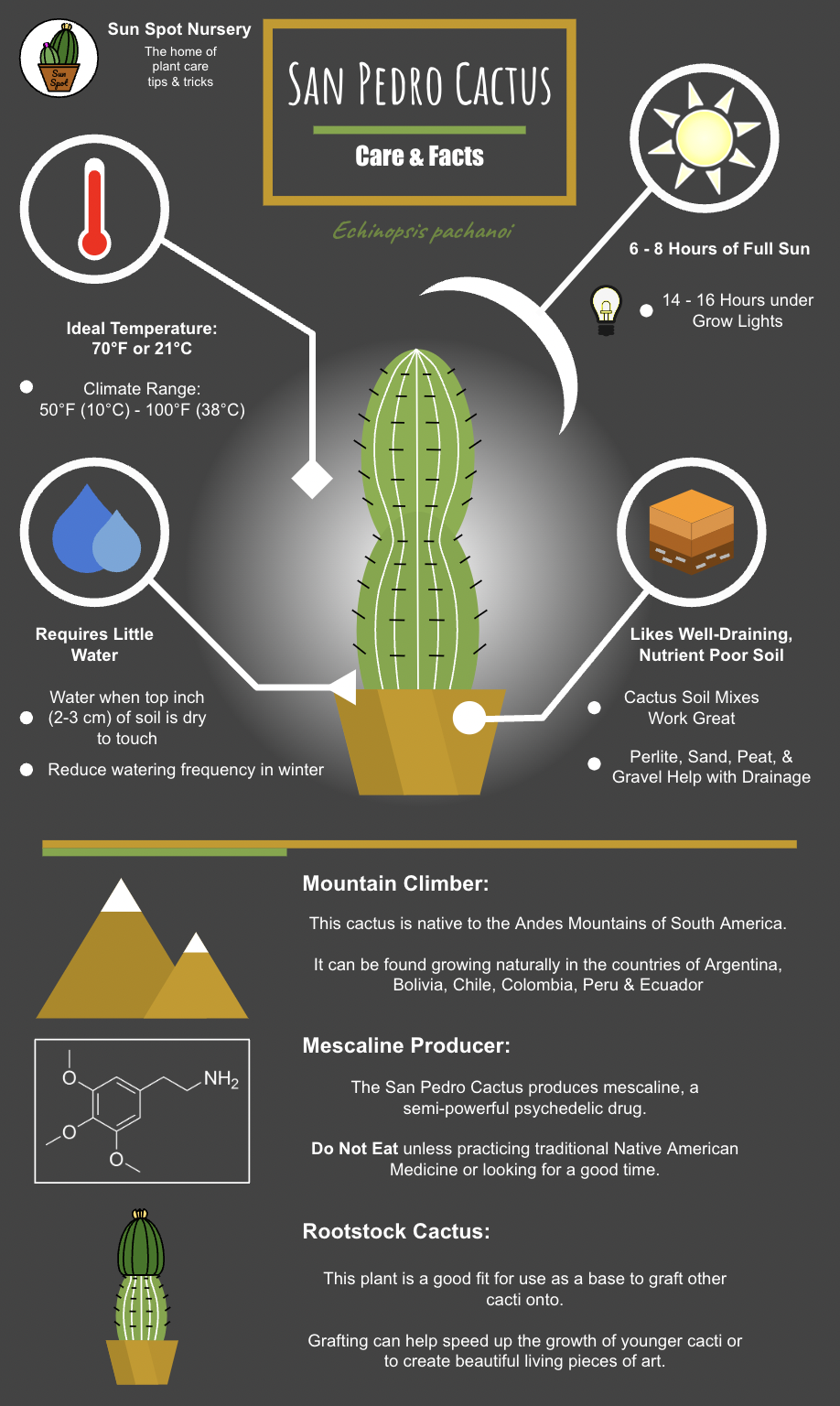San Pedro cactus (Echinopsis pachanoi) is a fascinating species renowned for its impressive stature and cultural significance, particularly in Andean spiritual practices. Identifying and caring for this unique plant involves understanding both its physical attributes and requirements for optimal growth.
In this guide, we will explore the essential characteristics of San Pedro, its ideal growing conditions, and the best practices for nurturing it in a home environment. By the end, you will have a comprehensive understanding of how to recognize and care for this remarkable cactus, enriching your plant collection.
Recognizing San Pedro: Distinct Characteristics
When identifying the San Pedro cactus, one must first take note of its notable features. This columnar cactus can achieve heights of up to 20 feet in its natural habitat, but it is often much smaller when cultivated indoors or in gardens. Its stout, upright structure is segmented into ribs, with mature specimens typically exhibiting between four to eight prominent ribs spiraling around the plant.
The coloration of San Pedro is equally striking. Its vibrant, jade-green skin may sometimes display a bluish tint, especially under direct sunlight. The surface is predominantly smooth, although younger specimens may showcase slight spines along the ribs. These spines are not only ornamental; they serve a practical purpose in the plant’s natural environment, providing protection against herbivores.
In spring and summer, one can observe San Pedro’s flowers, which emerge at night and typically bloom white or yellow. These nocturnal blooms are both ephemeral and aromatic, attracting night-flying pollinators such as moths. The unique structure of the flowers, resembling elongated tubes, is indicative of their pollination mechanism. As a curious observation, the flowers can reach up to six inches in length.
Understanding the Native Habitat
To effectively care for San Pedro, it is vital to consider its native environment. San Pedro is indigenous to the Andean mountain region, thriving at elevations between 3,000 to 4,000 meters. This lofty habitat means that the cactus is adapted to bright sunlight during the day and cooler temperatures at night, leading to a significant temperature variation.
Due to its origin, when cultivating San Pedro indoors or in gardens, one should mimic its natural conditions as closely as possible. Full sun exposure for at least six hours a day is ideal. Insufficient light can lead to etiolation, resulting in a tall, leggy cactus that lacks the characteristic robust appearance.
Additionally, water drainage is crucial for preventing root rot—a common issue among cactus cultivators. San Pedro thrives in well-draining soil, ideally a mix of sand, perlite, and cactus potting soil. This combination allows for proper aeration and moisture control, essential for a healthy root system.
Caring for San Pedro: Best Practices
Watering: An Art and a Science
When it comes to watering San Pedro, timing and technique are of the essence. During the growing season—in spring and summer—weekly watering may be necessary, while in fall and winter, the frequency should be drastically reduced to once or twice a month. Always ensure that the soil dries out completely between waterings, as over-saturation can lead to severe damage.
Additionally, the watering technique should focus on deeply saturating the soil while avoiding water accumulation at the base of the plant. A thorough soaking allows moisture to reach the deeper roots, promoting a more resilient plant in the long term.
Fertilization for Flourishing Growth
While San Pedro is a hardy plant that thrives in poor soil conditions, occasional fertilization can be beneficial. Using a diluted, balanced fertilizer during the growing season can stimulate robust growth and flowering. Experts recommend a formulation with nitrogen, phosphorus, and potassium—often referred to as NPK—applied every four to six weeks. Be cautious with fertilizer application in winter, as the plant enters dormancy; nutrient requirements are significantly lower during this period.
Temperature and Environment: The Perfect Balance
San Pedro is relatively tolerant of different temperature ranges, but maintaining an environment that closely resembles its native habitat will yield the best results. Ideally, daytime temperatures should range between 70°F to 90°F (21°C to 32°C), with nighttime temperatures dipping to 50°F to 60°F (10°C to 15°C). Protection from extreme weather is paramount; indoor plants should be shielded from drafts, while outdoor specimens may require shade during intense heat to avoid sunburn.
Pest and Disease Management
Despite being resilient, San Pedro is not immune to pests and diseases. Common challengers include mealybugs, spider mites, and scale insects. Regular inspections of your cactus can help detect infestations early on, allowing for prompt treatment. A mild insecticidal soap can effectively eliminate pests when applied according to the manufacturer’s instructions. Healthy plants are better protected, so ensure proper watering and nutrition.
Conclusion: An Enriching Addition to Your Collection
In summary, recognizing and caring for San Pedro cactus involves understanding its distinctive characteristics as well as its environmental needs. By providing ample sunlight, well-draining soil, moderate watering, and occasional fertilization, this remarkable plant can flourish in your home or garden. Its unique beauty and intriguing flowers make it a rewarding addition to any collection, captivating both seasoned gardeners and novice plant enthusiasts alike.





Leave a Comment